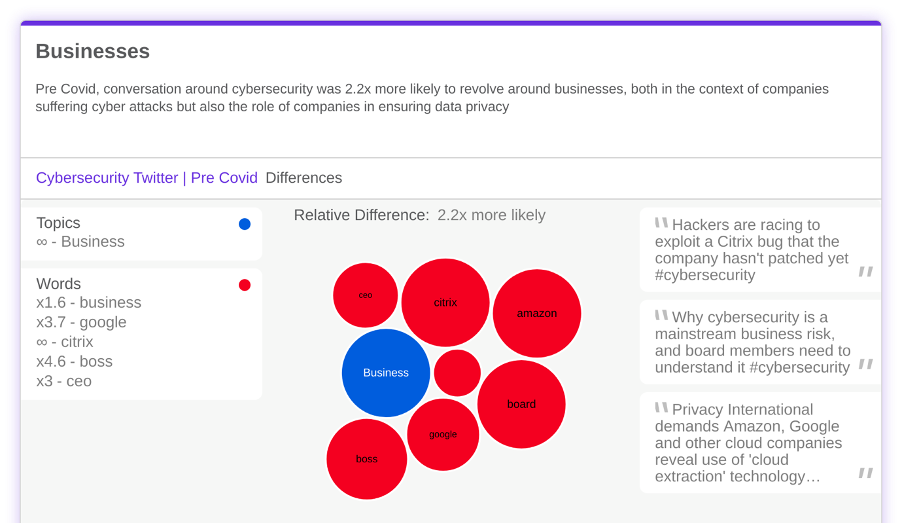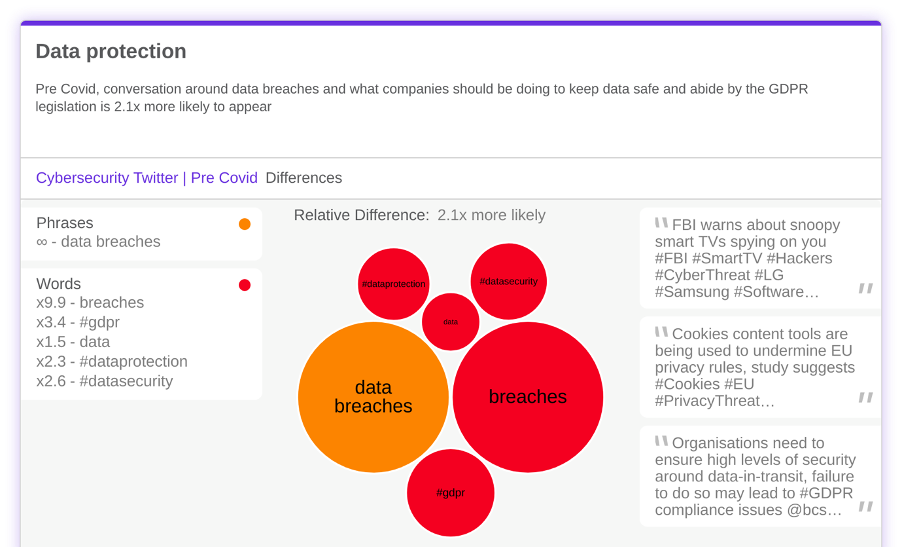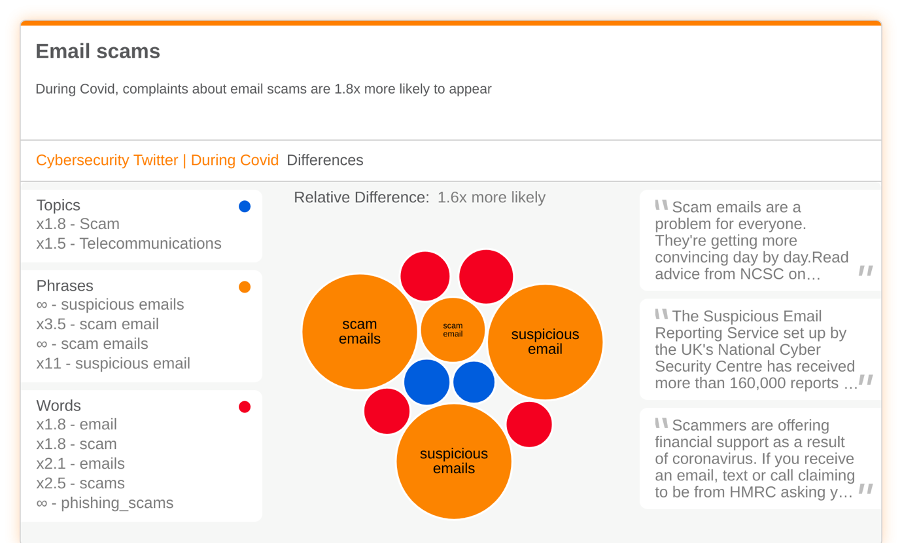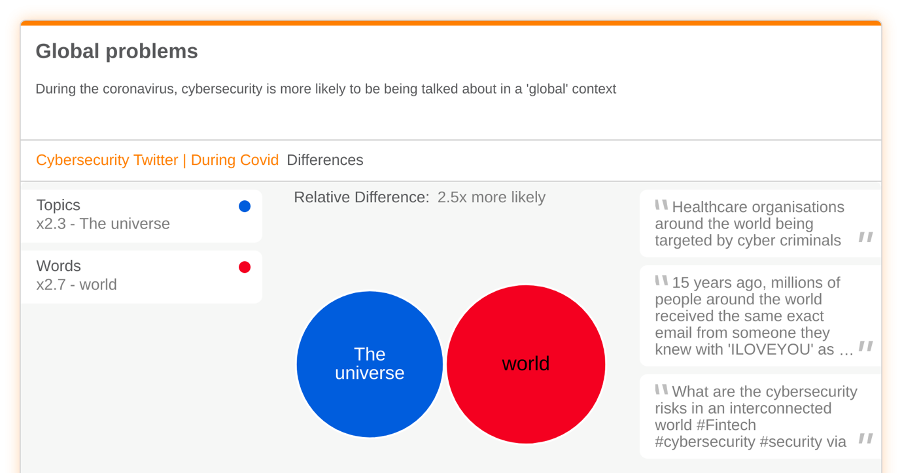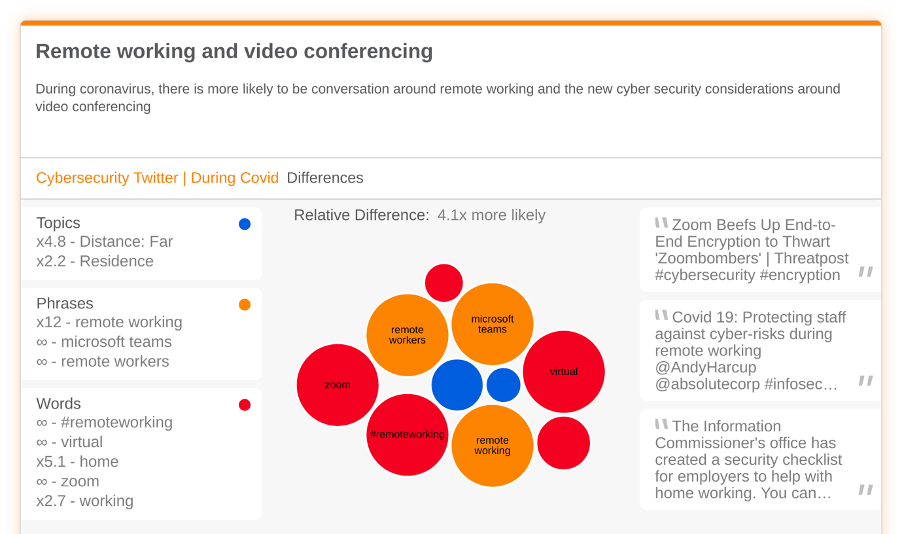Cybercrime and coronavirus – comparing people’s concerns

By Katie Norris
The coronavirus crisis has intensified the threat of cybercrime in a way never seen before. There has been an increase in reports of cyber-attacks on businesses as well as on individuals, as hackers and scammers take advantage of the chaos of the crisis, and my own inbox has never been so flooded with dodgy looking emails.
Given this massive surge in reports of cybercrime, I was interested to investigate how this new conversation around cybersecurity compared to the way people were speaking about it before coronavirus. I wanted to understand what had fundamentally changed in the cybercrime discussion.
Using Relative Insight’s text analysis platform, I was able to compare social media conversations about cybersecurity before and during the pandemic, to see how the conversation has shifted.
Pre-coronavirus
Before the outbreak, cybersecurity discussion was 2.2x more likely to revolve around businesses. Much of this focused on cyber-attacks that companies were facing, as well as their responsibility to ensure data privacy.
The threat to businesses

In fact, data protection in the context of company data breaches was 2.1x more likely to appear in cybersecurity conversation before coronavirus. There was more likely to be a focus on what big tech businesses such as Amazon and Google should be doing to ensure they were compliiant with GDPR and could guarantee data security.
Data protection

During coronavirus
The pandemic has brought with it a shift in cybersecurity conversation away from businesses and towards individuals’ experiences of cybercrime, suggesting that the general public are at a greater risk than before. The use of ‘I’ and ‘me’ is 1.5x more likely to appear as people report their own experiences of cyber threats.
The threat to people

Personal email scams
This includes email scams, which are 1.6x more likely to appear in conversation during coronavirus and which mostly revolves around sophisticated phishing emails.

Global problems
However, as well as language around individual experiences, cybersecurity conversation during covid-19 is also 2.5x more likely to be spoken about in a ‘global’ context. This reflects the worldwide nature of the virus and is therefore perhaps leading to a shift in more conversation around cybercrime as a global threat.

Working from home as the ‘new normal’
One such global threat is around the vulnerability of remote workers, as the possible risk to businesses and individuals was not a major consideration in the cybersecurity space before the pandemic.
During coronavirus however, there is 3.1x more likely to be conversation about the new risk of cybercrime around remote work and video conferencing, and how people using tools such as Zoom and Microsoft Teams should be protecting themselves.

Contact tracing apps – everyone’s favourite
Finally, coronavirus has also brought about a new threat to data privacy in the form of contact tracing apps, which is 4.1x more likely to appear in conversation during the virus. The new NHS app built by NHSX, has caused many to express concern about security flaws and the risks to privacy. The data protection conversation seems to have shifted away from the role of businesses around data security to the threat of surveillance to individual privacy.
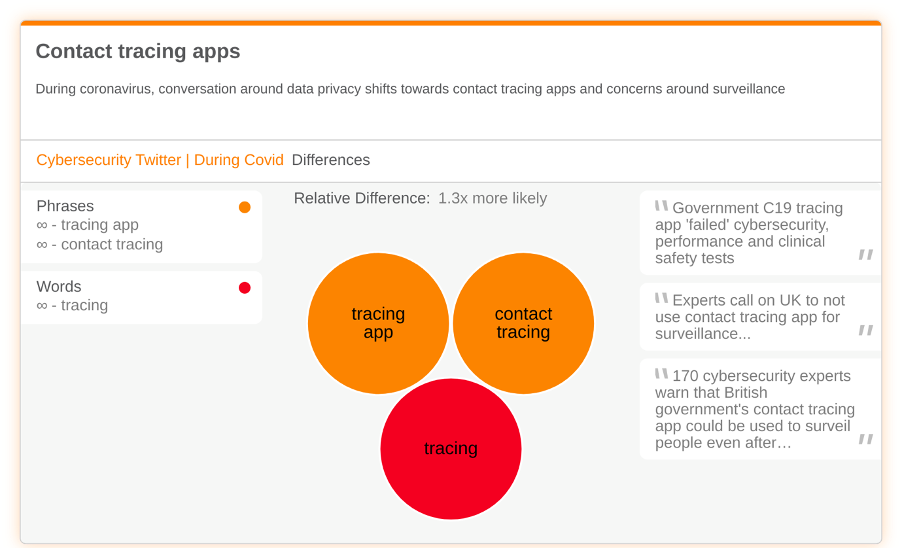
The cybersecurity landscape has shifted dramatically since the outbreak of the virus. As the conversation becomes more ‘global’ during the pandemic, it will be interesting to see how the discussion develops and what the impact is on the cybersecurity sector overall. Cybersecurity companies like Crowdstrike and Okta have seen huge market gains in recent weeks, with Crowdstrike’s stock climbing by almost 78% since March.
There have also been many that are anticipating a jump in investment into the industry, with companies such as Dtex, Living Security and Axonius all closing major funding rounds in recent weeks. With all this renewed focus on cybersecurity, monitoring new threats and new innovations over the coming months will no doubt be fascinating.
Relative Insight can compare any language data set you can imagine to help you understand more about any target audience.
